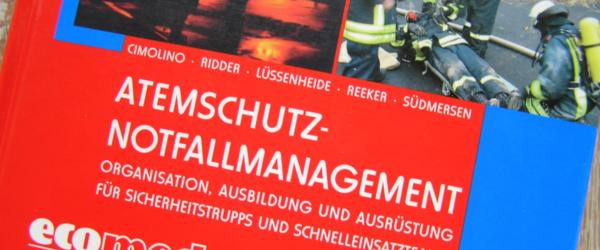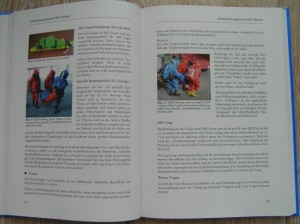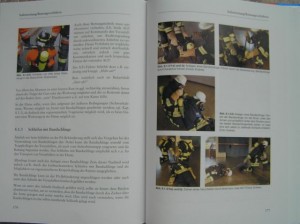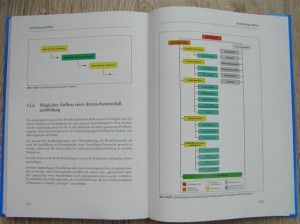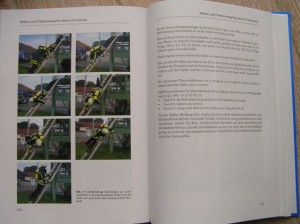Review of the Firefighting Book “Interior Attack Emergency Management” by Ulrich Cimolino
Interior attack emergencies are some of the most demanding and stressful missions for firefighters. In his new book, Ulrich Cimolino talks about possible solutions for keeping rapid intervention teams (RIT) organized and dispenses practical tips for rescuing firefighters who have been in an accident.
There have been two experiences that have drastically increased my respect for interior attack incidents: the lecture that dealt with accident reports involving deadly interior attack accidents (for example, Cologne, Göttingen, Tübingen etc.) and also my second SCBA training course with the Munich Volunteer Fire Department, which included many well-rehearsed interior attack emergencies. Both of these experiences have shown me, in a rather scary way, how routine incidents can have fatal endings and how little wiggle room you really have.
In my opinion, the topic of interior attack emergencies is still neglected in Germany, despite the deadly accidents. It’s also interesting to see how some firefighters take a rather casual approach to interior attack incidents. Even a “comparatively minor” interior attack emergency such as in the basement of a simple single-family home is a tough challenge for the firefighters. If you don’t believe me, just try putting on a shadowed mask and going into a basement with three other firefighters to save another buddy. That’s when you’ll realize rather quickly that a crappy situation such as that one is hardly manageable without the necessary education, training, and equipment. Just one more reason for firefighters, instructors, and/or supervisors to take a closer look at interior attack emergencies.
In order to shed some light on this uncharted territory, Ulrich Cimolino and his publisher Ecomed have published a book called “Interior Attack Emergency Management.” A lot of you who are familiar with the internet firefighting world might also know some of the co-authors. For example, atemschutzunfaelle.de team members Björn Lüssenheide, Adrian Ridder, Ingo Horn, and Jan Südmersen contributed to the book, as well as Jan-Ole Unger (drehleiter.info) and André Schild (ABC-Gefahren Blog).
Content of the book
Even though the book deals with a specific topic, it actually covers a broad spectrum of subject matters. The author deals with tactical and organizational issues (incident preparation and planning for successful RIT incidents, standard incident regulations, emergency training), but also gives practical tips (variations on immediate and gentle rescue, rescues from great heights and depths and variations on safeguarding breathable air supplies). The author also tackles background information such as causes of emergencies, authorization questions relating to emergency solutions (mainly the rescue SCBA) as well as stress management. The book is therefore suitable for firefighters who would like to learn practical approaches, as well as for chiefs who are in charge of managing RITs and their equipment.
What I consider to be the most important information
This firefighting reference book covers some interesting information that led to a few eureka moments for me:
- P. 37: The rescue of an interior attack team oftentimes takes more than 30 (!) minutes and cannot be handled by just one team with only two firefighters. >> This goes to show once again the psychological and physical challenges firefighters face during an interior attack emergency.
- P. 41 and 44: One lighter RIT (higher speeds) and an additional heavier RIT (extra rescue equipment) are recommended for the rescue of firefighters. >> Interesting approach that I wasn’t really aware of before.
- P. 92: In the event of an emergency situation during an interior attack incident, 2 additional fire brigades should be immediately alerted. One brigade deals with the initial incident, and the other brigade supports the rescue of the injured firefighter. >> Here you can once again see the tremendous additional need for help required by such an incident.
- P. 92: In the event of an emergency situation during an interior attack incident, 2 additional fire brigades should be immediately alerted. One brigade deals with the initial incident, and the other brigade supports the rescue of the injured firefighter. >> Here you can once again see the tremendous additional need for help required by such an incident.
- P. 131: It is recommended that the RIT has its own door marking for searching the rooms. In addition to the well-known “X,” marking with a circle is also recommended here. >> Easy method to avoid mix-ups.
- P. 133: In order to reduce stress and noises, the RIT should carry a key with it so it can deactivate the emergency signal sensor of the injured SCBA carrier. >> Again, a simple method that can make a rescue easier.
- P. 166: There are three ways to hook up the rescue SCBA to the injured firefighters: via a medium pressure hose (all devices are compatible), by switching out the demand valve or swapping out the entire mask. >> I wasn’t aware of the fact that the medium pressure hose can be used with any type of device (positive or negative pressure, press lock/screw cap).
- P. 222: The training should be tougher than the actual incident. >> This type of training made me reach my performance limit at the Munich VFD and significantly heightened my awareness of interior attack emergencies. In my opinion, the right way to show the fireifighter how limited chances are during an emergency and how important the topic really is.
What I liked about the book
I particularly liked the comprehensive treatment of the subject matter. The author covers practical tips that can be implemented as well as the topic of organization. So, after reading this
book, you not only know a lot more about interior attack emergency management, but you also understand the required background information.
A picture is worth 1,000 words: Countless graphics loosen up the book and make the data a bit more understandable. It’s really great to see that numerous fire departments have lent their support here by donating pictures.
The book really puts an emphasis on training, so interior attack educators/trainers can really profit from it. In addition to recommending a training program, there are countless incident exercises that can be directly applied during training. Also, it is suggested that a standard operating procedure (SOP) for “RIT incidents” is implemented, a helpful model for anyone who has to deal with something like this.
What could maybe be improved upon
I can’t think of a lot of things I’d improve upon, but still, I’ve told myself that I’d like to always give feedback on how a book can be improved. In chapter 7.1, where the author talks about risk assessment, I just couldn’t keep up because I don’t have the necessary background knowledge. It would be great if there were a book that deals particularly with this topic. Many firefighters such as myself really don’t have a clue when it comes to this, and unfortunately, there is a lot of false or outdated information out there.
Chapters 12.6 (possible set-up of an interior attack emergency training session) and 14.3 (training recommendations for interior attack emergency training) as well as 12.7 (practical tips for RIT training), and 14.3.4 (drill suggestions) could maybe be lumped together, as the chapters sort of overlap and are pretty similar in terms of subject matter.
In conclusion, I’d like to say that I strongly recommend this book to anyone involved in interior attacks. And this is really important: Don’t just read the book, but actually try some of it. As I previously mentioned, this book really did open my eyes, and I have a lot of respect even for “small” interior attack situations in single-family homes, for example
How to win the book “Interior Attack Emergency Management“
The Ecomed publishing house didn’t just give me a free copy of the book for this review, it also gave me a copy of “Interior Attack Emergency Management” to use for a drawing. So, get on your computers and start typing your comments about interior attack emergency management. Whether you write about your own experience, almost-accidents or other interesting concepts and approaches, I’m interested in any and all feedback. After 7 days, I will randomly pick a winner out of all the comments under this review and will send him/her a brand new book. Please don’t forget to leave a valid e-mail address I can use to contact you. (This is over)
[Updated on 09/12/2010] The winner is „Firefighter”. An e-mail is on its way to your inbox. Thanks to everyone who participated!
Ulrich Cimolino’s book gets 4 Flos out of 5.

Enjoy reading the book!
